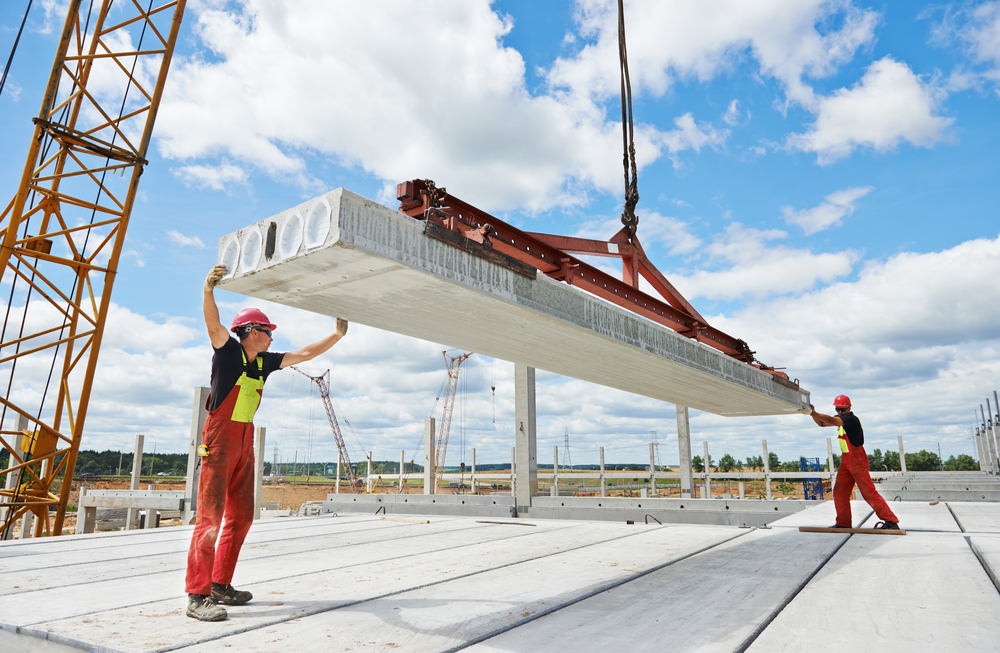Step-By-Step Guide to Laying A Concrete Slab Like A Pro

Dreaming of a smooth & solid base for your shed, patio, or outdoor haven?
A concrete slab is your ultimate DIY flex. It’s sturdy, reliable, and (with the right guide) surprisingly easy to pull off. But the idea of building formwork for concrete sounds like a big & messy commitment. Right?
Don’t sweat it! With the right tools, materials, and some expert tips. You’ll have a slab that all your mates will admire.
At Ply Supply, we know good materials are half the battle won. Whether it’s timber boards or concrete formwork, we assure reliability. So, you don’t have to deal with any fuzz. Just high-quality & durable material to get your job done right.
So, roll up your sleeves and get started.
What Is a Concrete Slab?
A concrete slab is a flat, horizontal surface made from poured concrete. It is reinforced with steel and timber for added strength.
Concrete slab is used as a sturdy foundation for floors, patios, driveways, and even walls. Due to high durability and weather resistance. It is one of the most popular building solutions for residential and commercial properties.
This guide will walk you through the process of creating a reliable concrete slab. Using high-quality materials and formwork for concrete. So, it can last through all the environmental challenges.
Materials You’ll Need for Concrete Slab
Before starting your project, make sure you have the following materials ready. Invest in trusted high-quality concrete and formwork Perth for your peace of mind.
- Concrete mix: You can buy pre-mixed bags or create your own blend.
- Gravel: A base layer that improves drainage and provides support.
- Timber formwork boards: Used to create the frame for your slab.
- Double-headed or clout nails: Used to build the timber framework.
- Road base or crusher dust: required to bed the slab
- Reinforcement mesh: For slabs that need extra strength.
- Plastic sheeting: Protects the slab during curing.
- Clean water: Continuous supply is needed along the process.
Now, let’s talk about the tools to work these materials.
Tools Required for Laying a Concrete Slab
Having the right tools is essential for a smooth & efficient process. Here’s what you’ll need:
Tool | Purpose |
Tape Measure | For precise measurements. |
Spirit Level | To measure the flatness of surface. |
Mattock | For digging the site. |
Shovel | For digging and levelling the site. |
Turf Cutter | Optional for clearing grassy area. |
Wheelbarrow | To mix and transport concrete. |
Concrete Mixer | Optional but highly useful for larger slabs. |
Tamper or Plate Compactor | For compacting the base material. |
Timber Saw | For creating timber boards. |
Hammer and Nails | For assembling the formwork. |
Safety Gear | Gloves, goggles, and steel-toed boots. |
Wooden & Magnesium Float | To make concrete even. |
Trowel | For smoothing the surface. |
Metal Screed Board | To level the concrete. |
Steel Edging Trowel | To create the smooth edges. |
Measuring Jug | For precise water & cement additions. |
Hose, Broom & Bucket | For water supply. |
Once you have all the supplies, get prepared for the process.
5 Preparation Tips for a Smooth Procedure
Preparation is key to successfully laying a concrete slab. Follow these tips to make everything go smoothly:
- Select a level area that’s free of obstructions like tree roots or rocks. Ensure the site has proper drainage to prevent water pooling on the slab.
- Check if you need any permits involving concrete formwork or permanent structures. Check with local authorities depending on your location before you begin.
- Avoid pouring concrete on rainy or very hot days. Aim for dry and mild weather to ensure proper curing.
- Start the process of placing and finishing concrete early in the morning. Before rising air temperature and wind speed or humidity drop.
- Buy your materials, including Australian formwork supplies, ahead of time to avoid delays.
Let’s not forget the essential safety procedures also.
Safety Precautions Before You Start | 5 Essentials
Laying a concrete slab requires physical labour and the use of tools. Follow these precautions to keep yourself safe.
- Always wear gloves and long sleeves to protect your hands from alkaline cement.
- Use a facemask and goggles to shield your face & eyes from dust or splashes.
- Use steel-toed boots to prevent injuries from heavy materials.
- Take care when handling sharp tools or power equipment like concrete mixers.
- Work with a partner, especially when lifting heavy items like formwork products or concrete mix.
Now that you’re ready and prepared, let’s break the process into understandable steps.
12 Steps to Laying a Concrete Slab
Here are the steps to create a durable concrete slab from timber formwork boards.
1. Measure the Location and Size
Start by measuring the area where you want to lay the slab. Use a tape measure to determine the length, width, and depth of the slab.
The dimensions should suit the intended use, like a driveway or patio.
2. Mark the Area & Slab Boundaries
Mark the boundaries of the slab using stakes and string. You can also use spray paint. The marking will make sure that your slab will be laid in the exact position you want.
Check for level alignment using a spirit level.
3. Prepare the Area
Clear the area of grass, roots, rocks, or any debris. Use a shovel to dig to the desired depth, which should accommodate the slab and the gravel base.
For smaller projects, a depth of 10-15 cm is usually sufficient.
4. Cut Timber to Measured Length
Use high-quality Timber Formwork Boards from Ply Supply to create the frame. Measure and cut the timber to the required dimensions.
The formwork will hold the concrete in place as it cures.
5. Secure the Timber Box Together
Assemble the concrete formwork by nailing or screwing the timber boards together. Build a sturdy and square box and check for its strength.
Use a spirit level to make sure the edges are perfectly aligned.
6. Prepare the Framework of Steel Pickets
Steel will add the strength to hold anything like foot traffic or a vehicle on a driveway. Place reinforcement mesh inside the formwork of your slab.
This step is required only for larger slabs or areas subject to heavy loads.
7. Prepare the Concrete
Mix the concrete according to the manufacturer’s instructions. For raw materials, following ratio will be used to create a mix:
1 part cement : 2 parts sand : 4 parts coarse aggregate
Mix with a wheelbarrow or concrete mixer. The consistency should be thick but pourable.
8. Install the Steel to Embrace Timber
Secure the reinforcement mesh within the formwork to prevent it from shifting during the pour. They should be aligned and properly safely held together.
Tie it with steel ties or place it on spacers for even positioning.
9. Pour the Slab
Within half an hour of mixing, begin pouring the concrete into the formwork. Start at one corner and work your way across.
Use a shovel to distribute the concrete evenly and minimise air pockets.
10. Flatten the Surface
Use a screed board to level the surface of the concrete. Move the screed back and forth across the formwork in a sawing motion for a smooth finish.
Allow for a slight slope away from buildings for drainage purposes.
11. Smooth the Concrete
When the bleed water has left the surface & concrete starts stiffening. Use a wooden or magnesium float and trowel to smooth out the surface.
Work in sections and maintain consistency for a polished look.
12. Edge the Corners
Use an edging tool to round off the corners of the slab. For larger slabs, use a jointing trowel to make control joints at 150-cm intervals to avoid cracks.
This prevents chipping and gives your slab a professional appearance.
Curing and Final Touches
After pouring and smoothing the slab, allow it to cure for at least 24-48 hours. Cover the slab with plastic sheeting to lock in the moisture. Because quick drying can lead to cracks. Curing is like concrete’s beauty sleep so don’t skip it.
You can also create these finishes after curing.
Trowelling: Smooth surface using a steel trowel.
Brushing: Textured appearance using a broom while it is still plastic.
Exposed Stone: Brushing and washing with a hose until the stones are slightly exposed.
Wait for at least 7 days before throwing a party or driving your car on it. This settlement time will give it the strength required to bear the heavy loads.
Need Durable Concrete Formwork Perth for Your Slab?
Build the Concrete Slab with Confidence Using Ply Supply
At Ply Supply, we provide premium-quality formwork products. Including durable Timber Formwork Boards that make laying a concrete slab easier and more efficient.
Whether you’re tackling a small DIY task or a larger project. You can Buy Formwork Products Online from us with confidence. We’ve done the hard work of sourcing quality materials, so you don’t have to.
Let’s build something great together!
